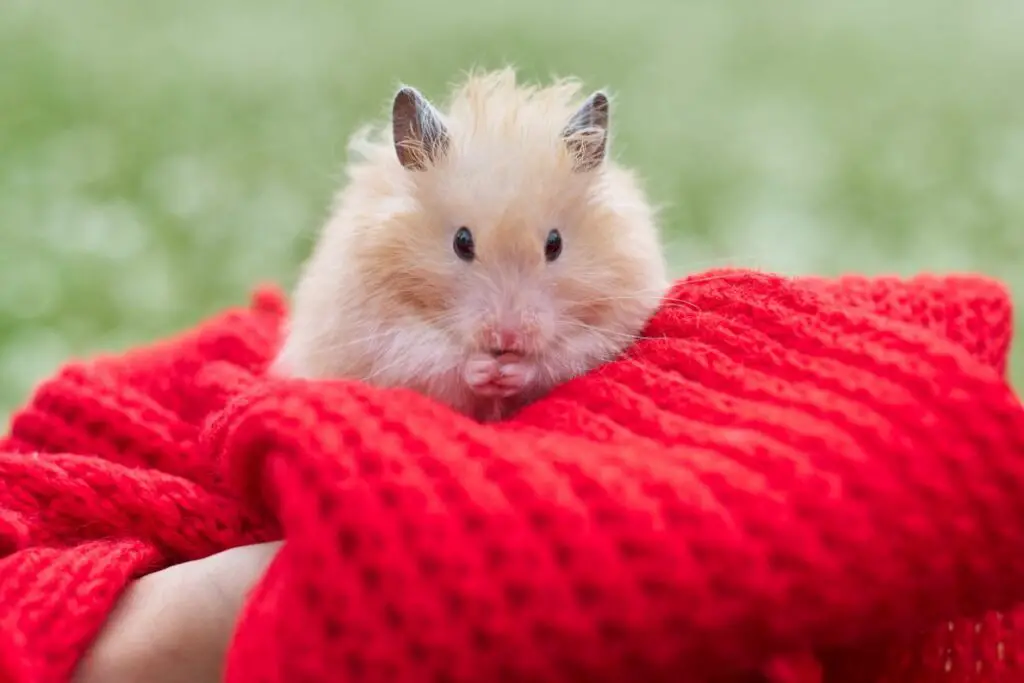Hamsters are adorable creatures that make great pets for both children and adults alike. These tiny rodents require minimal care and attention, but it’s essential to know their basic needs to keep them healthy and happy.
One of the most common questions that hamster owners ask is “Do hamsters shed?” The answer is yes, hamsters do shed, just like any other animal, but not that much. In this blog post, we’ll discuss everything you need to know about hamster shedding, including what causes it, signs that your hamster is shedding, how often it happens, and how to manage it.

What Causes Hamsters to Shed?
There are several reasons why hamsters shed their fur, including natural shedding, seasonal shedding, and stress-induced shedding.
Natural Shedding Process
Like other animals, hamsters shed their fur naturally as part of their growth and development process. During this process, hamsters will shed their old fur to make room for new growth. This process is essential for maintaining healthy fur, and it usually happens throughout their life.
Seasonal Shedding
Some hamsters also shed their fur seasonally in response to changes in temperature and light. For example, hamsters living in colder regions may shed their fur in the fall to grow thicker fur for the winter. This process is entirely natural and helps them regulate their body temperature.
Stress-Induced Shedding
Hamsters may also shed their fur due to stress. Stress can come from a variety of sources, including illness, changes in the environment, or even a new pet in the house. Stress-induced shedding is often accompanied by other symptoms, such as loss of appetite and lethargy.
Signs Your Hamster is Shedding
It’s essential to monitor your hamster for signs of shedding to ensure that they’re healthy and happy.
Physical Signs
One of the most apparent signs that your hamster is shedding is the presence of loose fur in their cage. You may also notice areas of baldness or thinning fur. Additionally, some hamsters may scratch or groom themselves more than usual.
Behavioral Signs
Stress-induced shedding may be accompanied by other behavioral changes, such as decreased energy or a lack of interest in food or play.
How Often Do Hamsters Shed?
The frequency of shedding in hamsters depends on their age, breed, and environment.
Age and Breed
Younger hamsters may shed more frequently than older hamsters, as they’re still growing and developing. Similarly, some species may shed more than others due to variations in fur texture and thickness.
Long-haired Syrian hamsters typically shed more, or at least have more noticeable shedding than other hamster species due to their longer coat. Dwarf hamsters, on the other hand, are typically less furry and have less hair to shed.
Factors that Affect Shedding Cycle
Environmental factors may also affect the shedding cycle of your hamster. For example, changes in temperature or lighting can trigger seasonal shedding.
How to Manage Your Hamster’s Shedding
Proper grooming, nutrition, and environment can help you manage your hamster’s shedding and keep them healthy.
Regular Grooming
Regular grooming is essential to keep your hamster’s fur healthy and reduce shedding. Use a soft-bristled brush or comb to remove loose fur and help distribute natural oils throughout their coat.
Proper Nutrition
A healthy diet is also essential for maintaining healthy fur. Provide your hamster with a balanced diet that includes a variety of fresh fruits, vegetables, and high-quality hamster food.
Providing a Comfortable Environment
Finally, providing a comfortable environment can help reduce stress-induced shedding. Make sure your hamster’s cage is clean, spacious, and has plenty of toys and hiding places.
Conclusion
In conclusion, hamsters do shed, and it’s entirely natural. Luckily, their hair is usually short and they don’t shed that much.
As a responsible pet owner, it’s important to understand what causes shedding and how to manage it to keep your hamster healthy and happy.
By providing proper grooming, nutrition, and environment, you can ensure that your hamster’s shedding cycle remains healthy and under control.
- How Long Do American Eskimo Dogs Live? Important Factors and Care Tips - September 29, 2023
- Do American Bulldogs Need Grooming? Essential Tips and Care Guidelines - September 29, 2023
- Do Bengal Cats Enjoy Playing? Essential Tips for Keeping Them Active - September 29, 2023